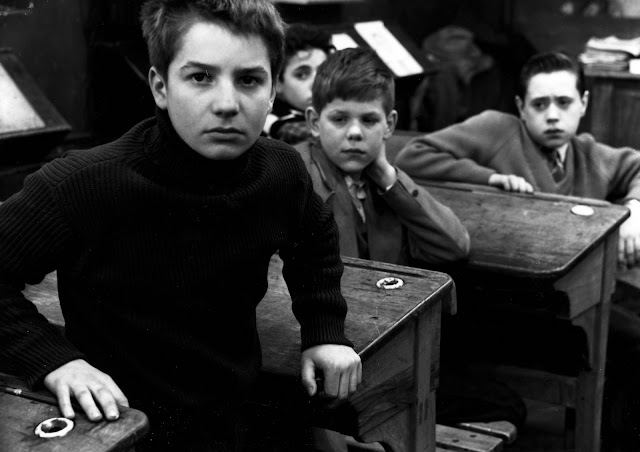Nanook of the North (1922)
Robert J. Flaherty's "Nanook of the North"
We all know what a documentary film is. We understand that it typically features an explorer, historian, journalist, or similar figure documenting non-fictional events through the lens of the narrative they've constructed. But where did this format originate? The answer lies with Robert J. Flaherty's "Nanook of the North," which appears to document the harsh conditions and daily life of an Inuk family in the Canadian Arctic. We see Nanook and his family hunting walruses, building igloos, and performing other tasks. The film is presented as an inside look into a non-colonized world. Audiences who flocked to see the film marveled at an environment, a people, and a daily routine that were completely alien to them. However, despite the film's legacy of creating the documentary format, it was, in fact, a staged production. While most documentaries capture life as it unfolds, Flaherty constructed a fictionalized version of the 'essence' of the Inuit people.
While Flaherty did script and construct a fictionalized account of another culture, that does not mean he was entirely unaware and ingrained in the customs and daily life of Artic inhabitants. In 1910, he was hired by Sir William Mackenzie to explore and prospect the Hudson Bay, specifically to look for iron ore and other mineral deposits for the Canadian Northern Railway. On his expedition, he learned a great deal about the land and its people. By 1913, he had become so enamored and fascinated by this world that he brought along a glass-plate steel camera and a small portable printer and processor. From 1913 to 1915, Flaherty was able to capture the daily life of the Inuk people on film, and even screen these film strips to an enthusiastic audience. However, after the film stock was destroyed by one of Flaherty's dropped cigarettes, he resolved to return to the Artic to continue his documentation.
When he ventured back to the Canadian Arctic in 1920, Flaherty decided to refocus his concept for a film. He felt that his earlier footage resembled a travelogue too closely. This time, his intention was to construct the 'essence' of Arctic life through staged events. A celebrated hunter of the Itivimuit tribe named Allakariallak agreed to be Flaherty's protagonist. In fact, a full collaboration with the Inuit people was crucial to the production, as many Inuit worked as Flaherty's crew - some of them even were more familiar with the camera than Flaherty was.
Many critics and historians condemned the film's historical and cultural inaccuracies. Many felt that Flaherty was impressing upon the Inuit the image of the 'subhuman' being, constructing scenes that made the indigenous people appear unknowledgeable about newfound technologies. For example, in a scene in which Nanook travels up to a trading post to trade with white Canadians, a white man shows Nanook a gramophone. The scene shows Nanook being astonished by the device, and even trying to bite into the vinyl disc playing the audio. This was a complete fabrication, as Nanook himself was completely familiar with a gramophone. Another distortion appears in the form of the hunting sequences. Nanook uses a harpoon to try and hunt a walrus. However, most Intuits actually had rifles for hunting. In response to these notions of inaccuracies, Flaherty argued that he was trying to capture the way Intuits lived before European colonization, stating, "one often has to distort a thing in order to catch its true spirit."
Despite its staging and inaccurate representations of the modern Inuit people, "Nanook of the North" defined where film could go in the realms of non-fiction story-telling. Even if the faux-documentary captures scripted events, the world-travelling and culture-hopping presented an opportunity for other filmmakers to capture real people and real events in the form of documentary filmmaking. Audiences in 1922 flocked to cinemas to travel to another world entirely alien to their own not only witness the harshness of the Arctic terrain, but to glimpse the daily lives of people foreign to them. With this, audiences were able to connect and empathize with people different than them. That being said, some audiences were not empathetic towards the Artic people, and only viewed them as zoo-like exhibits. The film leaning into the notion that the Inuit people being primitive only added to the exhibition-like viewing experience, more akin to a museum or zoo than to empathetic connection. Overall, the film itself is one of the most important pieces of film ever made, it ignited the idea of what a documentary is and could be. Its controversy deserves continued discussion, as the film should be viewed with objectivity. But, nothing can change the impact it has had on the history of cinema.




Comments
Post a Comment